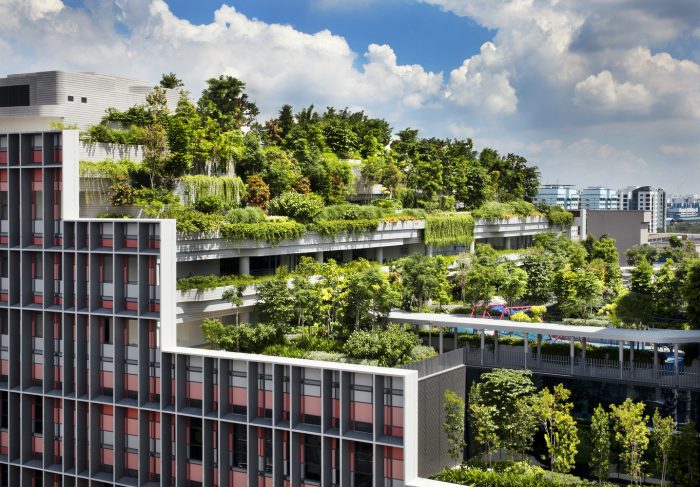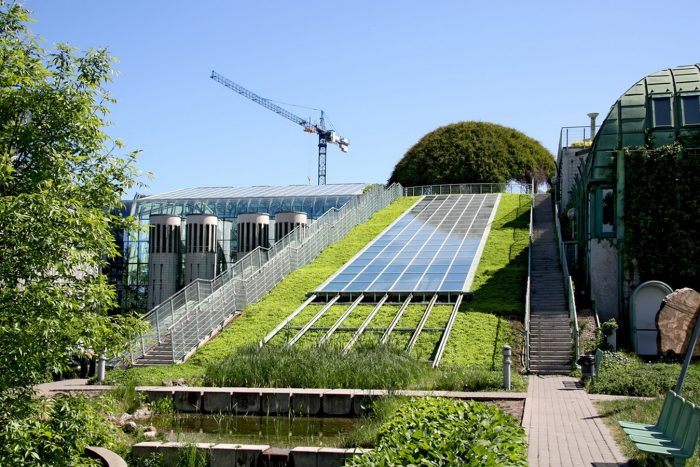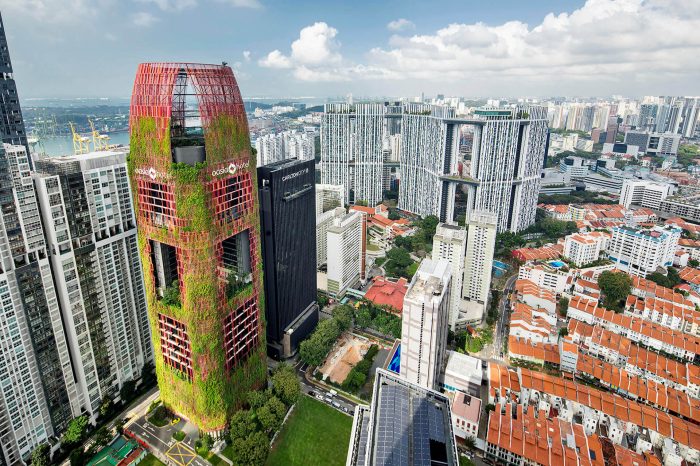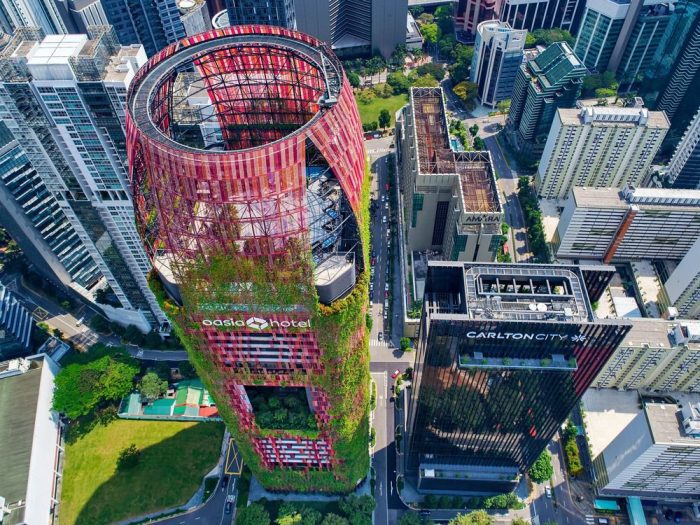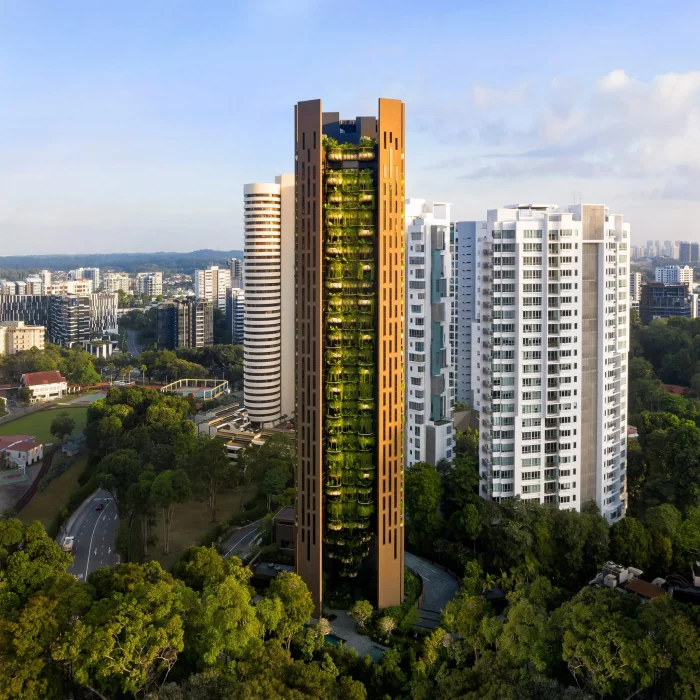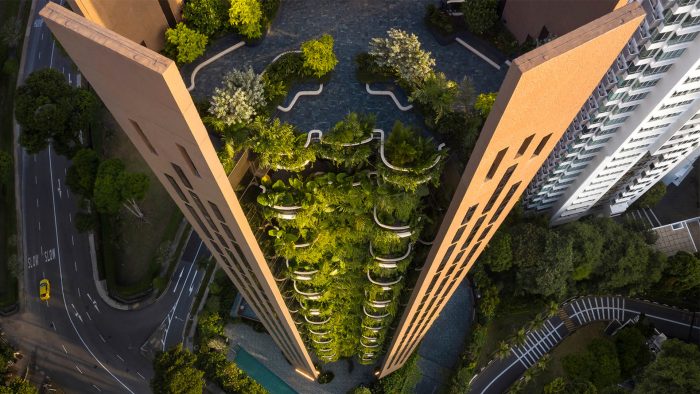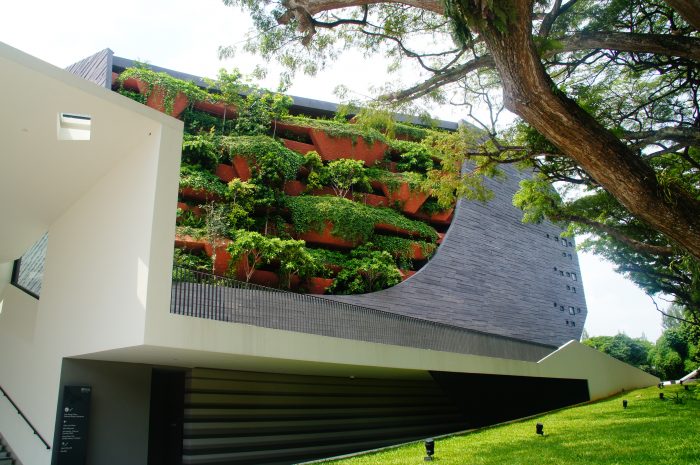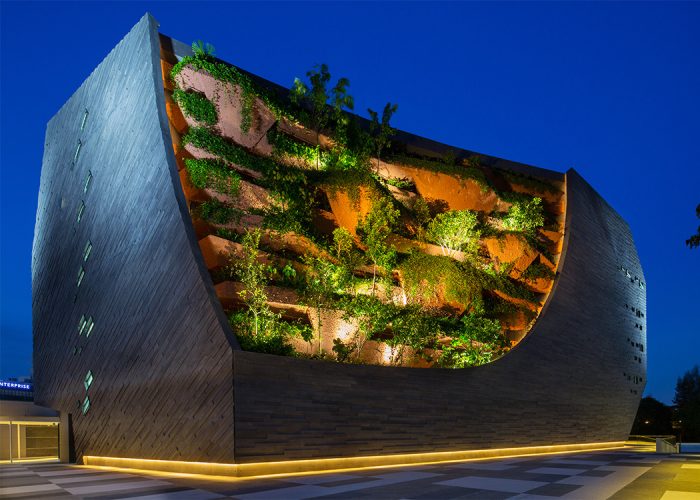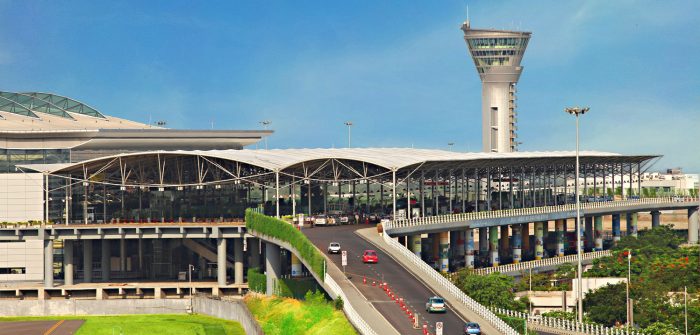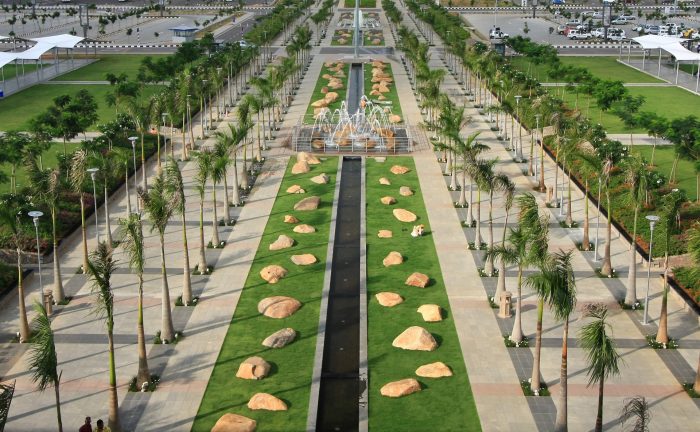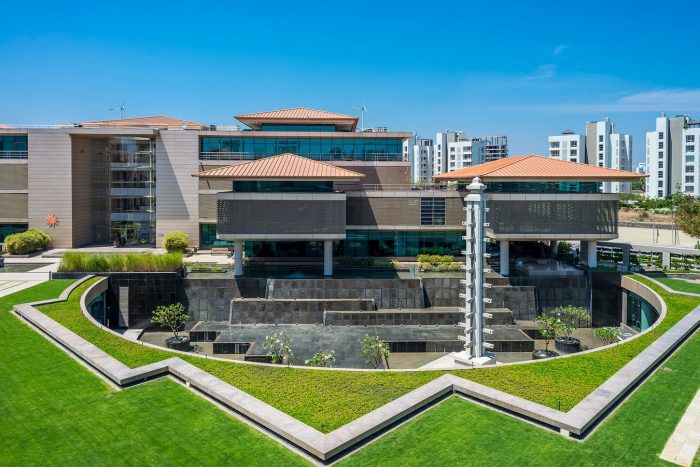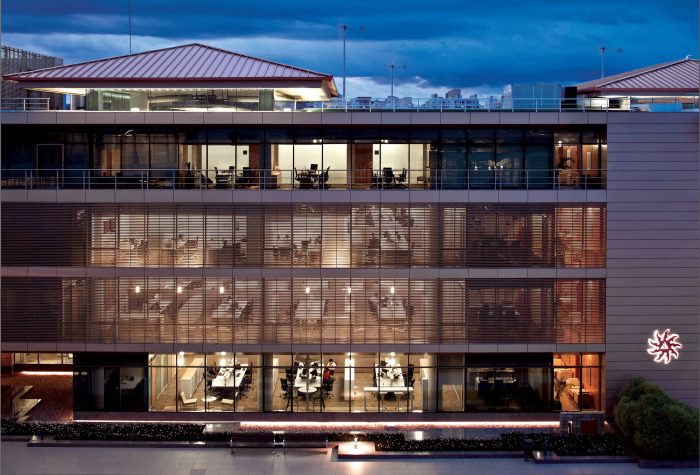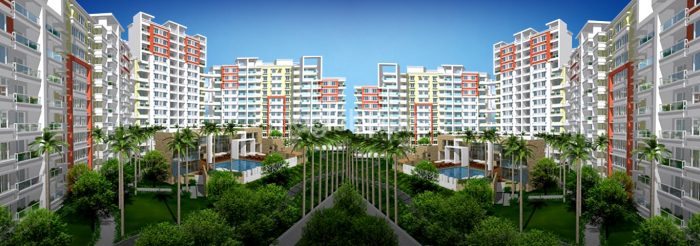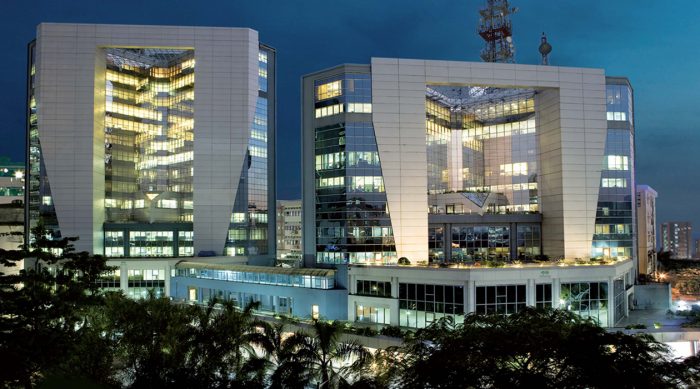Green buildings, urban gardens, tropical forests, green parks, green schools, and even greenhouses have not only been scientifically shown to lessen depression but also to be of incomparable value for saving our environment, according to a study by the University of Leeds.
With Singapore employing sky farms to address the hunger problem and Paris developing “urban woods” to reduce air pollution, it is evident that the approach of having a safer and sustainable ecological system is taking off. As the UN expects 68% of the world’s population will reside in towns and cities by 2050, urban gardens and friendly green buildings are beginning to spring up all over the place.
What are Green Buildings?
Green buildings begin with the knowledge that the built environment can significantly influence the surrounding environment and the individuals living there daily, both positively and negatively. Through a building’s whole life cycle, green buildings seek to maximize the advantages and minimize the negative consequences of these effects.
In its simplest form, typically, green buildings are regarded as the planning, designing, manufacturing, and operations of facilities with many fundamental, significant elements such as energy consumption, water use, environmental considerations, material section, and the building’s impact on its site.
When people hear “Green Buildings,” the first thing that comes to mind is a building splashed with green roofs and solar panels to embellish and conserve the environment, and that’s far away from the case. The truth is the holistic field of these sustainable buildings significantly impacts our lives.
Also read:-10 Tree Houses with Breathtaking Views of Nature
What are the goals of Green Buildings?
As previously mentioned, scientists worldwide actively encourage countries to incorporate and help finance greener construction methods, manufacturing, and daily living. It’s not surprising given that climate change alarm bells are constantly ringing with the threat approaching like never before.
On the other hand, architects and builders work together to design resource- and environmentally-conscious buildings. But can anyone construct a structure and call it a “green building”? Sure, we’d like to think otherwise, as constructing green buildings should adhere to the nine green building goals that people unfortunately rarely consider when making greenhouses or generally green structures.
1) Waste reduction:
It makes complete sense that waste reduction is a primary objective of sustainable building. There are numerous ways to reduce waste. A compost bin might be what this means in some structures. It might include using rainwater collectors in other cases. Waste reduction is a challenging and crucial component of sustainable architecture, requiring innovative thinking and problem-solving skills.
2) Efficiency with Resources:
Green timber materials should be the preferable materials whenever possible. In sustainable building construction, recycled materials, such as metal and stone, are preferred. Lumber or reusable materials like bamboo and straw are excellent substitutes for wood.
3) Minimizing the electricity impact:
Sustainable buildings make an effort to lower overall electricity use. New constructions now incorporate lighting fixtures, appliances, and other methods to conserve electricity.
4) Cut down on energy and water waste:
Green buildings reportedly use 20 to 30 percent less water and 40 to 50 percent less energy than traditional buildings.
5) Improve Air and Water Quality:
According to research, higher ventilation rates, low CO2 and pollutant loads, and better indoor air quality can boost productivity by up to 8%. Isn’t this what we all need?
Green structures eloquently demonstrate to us that their objectives go beyond enhancing the sustainability of the environment. When you decide to live more sustainably, you want to do so without harming the surrounding ecosystems.
Even if you cannot accomplish the five objectives of green buildings, consider the small changes you can make that will help make the planet healthier for all species, including humans, plants, and animals who call this planet home. As you’ll see below, building these sustainable buildings requires maximum effort. Whether they were redesigned buildings or wholly constructed from scratch, they mastered the green buildings’ primary goals and objectives.
Green buildings in Singapore:
In just 54 years since claiming its independence, the island nation of Singapore has developed into one of the world’s most potent yet environmentally conscious economies. Since then, Singapore’s ambitions to be a “city in a garden” went beyond natural public parks and trails. We have identified some of the most stunning locations in the city that are worth pausing in your steps to admire.
1) Oasia Hotel Downtown Singapore:
The 27-story, 314-room Oasia Hotel Downtown, designed by renowned WOHA, is a welcome oasis of greenery within Singapore’s Central Business District. The tropical skyscraper, a true paradise in the city, is delightfully elegant inside owing to Patricia Urquiola, a renowned architect and designer, and her contemporary functionalist aesthetic.
2) Eden:
The therapeutic advantages of nature were considered when designing this opulent garden home in Orchard. With layers upon levels of hanging gardens. British architecture and design firm Heatherwick Studio created the Eden skyscraper to bring Singapore’s tropical beauty closer to its inhabitants. These overflowed with uncommon and tropical species, supporting building cooling, rainfall absorption, and improved air quality.
The flooring plan is one of the less noticeable elements of the design. In a departure from typical, box-like residential towers, bedrooms and service spaces are relocated to the outside of the building. Residents benefit from increased sunlight and natural cross-ventilation, which reduces their need for air conditioning.
3) Lee Kong Chian Natural History Museum:
The Lee Kong Chian Natural History Museum, located on the National University of Singapore campus, houses the most outstanding collection of Southeast Asian samples in the entire globe. W Architects managed the building’s design and construction, with Tierra Design handling the landscape.
The exterior of the building has a six-story entryway that resembles a cliff filled with a variety of Singaporean native flora. The museum’s interior includes a variety of interactive displays with natural scenery, including freshwater swamps, palm trees, and other indigenous floral plants. These displays are positioned along the walkway between the geographic coordinate main building and the surrounding research facilities, allowing visitors to pause and take in the scenery as they go between the two structures.
Green Buildings in India:
India is one of the few nations leading the global green buildings movement. In 2001, the Indian Green Building Council (IGBC) joined the Confederation of Indian Industry (CII). The council aimed to create a workable environment for India by 2025. Here we list the top three green buildings in India to highlight the achievements of some of the leading pioneers.
1)Rajiv Gandhi International Airport (RGIA), Hyderabad:
The sixth busiest airport in India, Rajiv Gandhi Airport, located in the heart of Hyderabad, has become a model for environmentally friendly construction in the country.
The airport’s architecture intends to conserve natural resources and use less water and electricity. A 273-acre green belt with various vegetation exists on the airport’s site. RGIA has achieved energy savings of around 3.97 million kWh and a 3331-ton reduction in carbon emissions during the past two years.
2) Suzlon One Earth, Pune:
Christopher Charles, an architect with a base in Pune, created this notable sustainable office building, which in 2010 earned a LEED Platinum rating. He and his partner came up with the idea of “Office in the garden.” This majestic project, which spans 10 acres, is one of the nation’s most significant green building projects and one of the first LEED (Leadership in Energy and Environmental Design)-certified structures in India.
On-site and off-site renewable resources entirely power Suzlon One Earth. The campus features 18 hybrid wind turbines that provide 7% of the total energy used; the remaining 80% comes from renewables off-site. The building aims to receive as much natural light as possible, which lowers the need for artificial lighting. The campus’s infrastructure boosts water flow and reduces stormwater runoff, both of which help to raise the groundwater level.
3) Infinity Benchmark, Kolkata:
This 5,60,000-square-foot, 20-story building was the seventh building in the world to obtain a LEED Platinum certification at its opening.
The structure has humidification controls, rainwater harvesting, wastewater recycling, and CO2 monitor indicators. Brick wall blocks make up the building’s facade, and thick polyurethane foam decking provides additional roof insulation.
The most frequently asked questions:-
Why green buildings are important?
Through improved design, construction, operation, maintenance, and removal, green buildings encourage the effectiveness of structures with consideration to the use of water, energy, and resources while lowering the impact of the building on people's well-being and the environment.
How do green buildings save energy?
Green buildings adopt a strategic approach to energy by minimizing energy use throughout a building's lifecycle, improving the comfort and operating costs of new and renovated structures, and assisting building occupants in becoming more energy-efficient. Once a building's design has maximized inherent, natural efficiencies, integrate renewable and low-carbon technology to meet its energy needs.
What problems do green buildings solve?
The primary objectives of green buildings are to protect natural resources like water, energy, and raw materials, combat global warming (the production of greenhouse gases), reduce waste and other pollutions, and achieve maximum life satisfaction quality.


